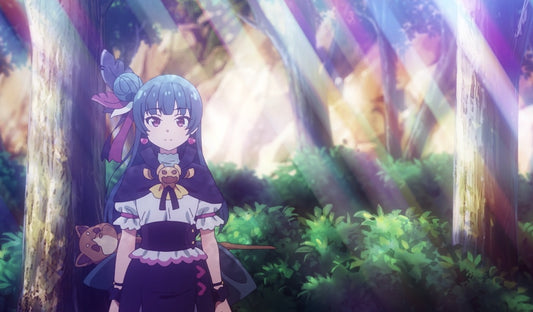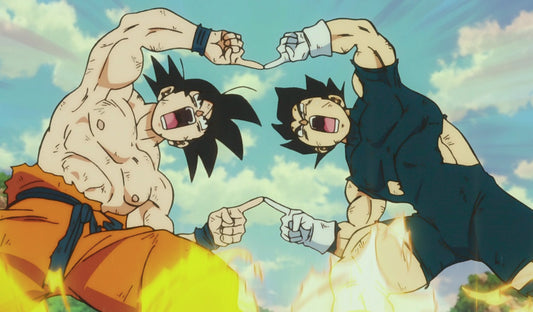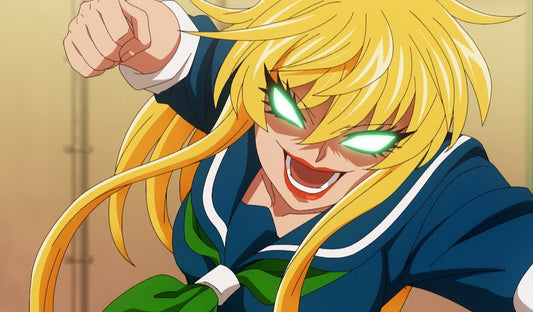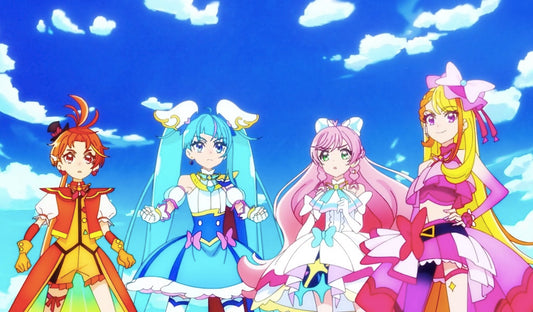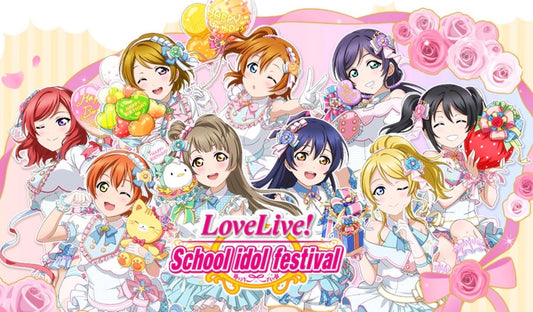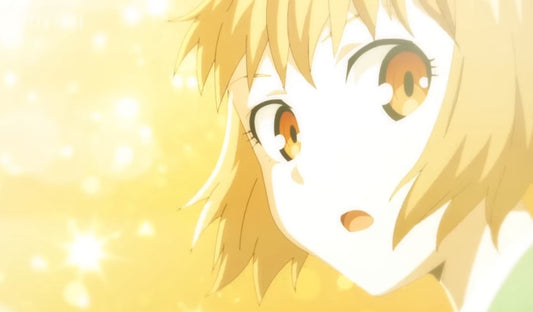What's Up with Anime Characters in Fighting Games?
Carl LiShare

Whether they’re original properties such as Guilty Gear and Arcana Heart, or they’re based on established media franchises such as Fist of the North Star and Melty Blood, there is a certain sub-genre of fighting games known to English-speaking audiences as “anime fighters.” I find this label fascinating for a number of reasons. First, whether it refers more to gameplay, visual aesthetics, or narrative elements varies depending on who’s using it. Second, certain values are placed onto “anime fighters,” such as big beams, characters soaring through the air, flurries of fists, cute girls, eclectic personalities, and elaborate visual flourishes, that often connect them to a general perception of “anime” among gamers. Third, the idea that some fighting games become “more” or “less” anime between iterations speaks to how popular cultures and subcultures interact with each other through the lens of video games.
Many of the “anime fighter” elements come across in gameplay, to the point that the alternative label of “air dashers” has come into use. It describes the prominence of aerial movement, as characters such as Guilty Gear’s nimble Millia Rage or BlazBlue's ninja Bang Shishigami soar through the air Dragon Ball Z-style, and also to encourage those who might not like “anime-looking things” to give these games a chance. And yet, I find that the simple idea that something “looks or feels like anime” shouldn’t be ignored. Although it is not unusual to think that the true appeal of fighting games come from how their characters interact with each other, the visual presentation can be of the utmost importance to gamers. Aesthetics are a part of the gaming experience. it would be remiss of me to not mention the fact that many of the above-mentioned tropes would find initial prominence due to their inclusion in fan-made doujin fighting games, which are generally based off of anime or visual novel characters, and of which Melty Blood is the most famous.
 The valuing of elements other than gameplay is why the rocket-punching, colorful female robot Alisa Bosconovitch in Tekken 7 is labeled as a heralding of that series becoming more “anime.” It’s why, even after Mortal Kombat abandoned the use of digitized sprites in favor of 3D models, subsequent games still aimed for a kind of “Heavy Metal” magazine look. That same audience likely wouldn’t touch Arcana Heart, because the kind of game that would feature Kira Daidohji, a little girl in a swimsuit wearing a randoseru backpack while wading in a giant slime, is antithetical to the image they want out of fighting games. It’s also why fans of Ultimate Marvel vs. Capcom 3 end up deriding anime fighters even though the Vs. series itself has origins in the anime-esque artwork of the artist known as Bengus, whose designs are featured in Street Fighter Alpha in 1995, as well as Darkstalkers, X-Men: Children of the Atom, and indeed Marvel vs. Capcom.
The valuing of elements other than gameplay is why the rocket-punching, colorful female robot Alisa Bosconovitch in Tekken 7 is labeled as a heralding of that series becoming more “anime.” It’s why, even after Mortal Kombat abandoned the use of digitized sprites in favor of 3D models, subsequent games still aimed for a kind of “Heavy Metal” magazine look. That same audience likely wouldn’t touch Arcana Heart, because the kind of game that would feature Kira Daidohji, a little girl in a swimsuit wearing a randoseru backpack while wading in a giant slime, is antithetical to the image they want out of fighting games. It’s also why fans of Ultimate Marvel vs. Capcom 3 end up deriding anime fighters even though the Vs. series itself has origins in the anime-esque artwork of the artist known as Bengus, whose designs are featured in Street Fighter Alpha in 1995, as well as Darkstalkers, X-Men: Children of the Atom, and indeed Marvel vs. Capcom.
Considering Bengus’s work, I think it actually provides an interesting point of focus for any discussion regarding anime aesthetics in fighting games. In particular, while he had been part of the Street Fighter franchise from almost the beginning (he’s responsible for much of the artwork for later versions of Street Fighter II), and you could see elements of “anime” in these games from day 1, there is clearly a shift in tone for the Street Fighter Alpha series.

An amateur fighter and a Ryu fangirl, Kasugano Sakura is a visual marker of Japanese popular culture due to the prominence of her sailor school uniform. Her rival, Kanzuki Karin, not only embodies the wealthy “ojousama” archetype, high-pitched laughter and all, but actually began as a character in the manga Sakura Ganbaru! before being featured in Street Fighter Alpha 3. Prior to the Alpha series, Street Fighter II: The Animated Movie debuted, and its portrayal of M. Bison (Vega in Japan) was clearly the primary motivation for changing the character from a head-stomping, scissor-kicking, but relatively normal-looking character to a teleporting, purple energy-flinging mass of muscles in Street Fighter Alpha. During this time, it could easily be argued that Street Fighter was very “anime,” which is why it’s so noteworthy that, after the franchise was revived in 2008 with Street Fighter IV, many of the designs that came from the Alpha era had to be toned down to match the rougher aesthetics of these newer games.
 I believe that the reason for the art directions in Street Fighter IV and now Street Fighter V are pretty clear. While games such as the Street Fighter Alpha series were created at a time that Capcom prioritized the Japanese consumers, Street Fighter’s revival in the mid-2000s wanted to recapture the series’ strength as a global phenomenon. Although the anime aesthetic is regarded fondly in many places around the world, such as Brazil and France, that’s not the case everywhere, especially when factoring a market as large as the United States. To the general American gaming population, the primary look of video games over the past 10+ years has been realistic grittiness. Thus, characters such as Sakura, Birdie, Gen, and even Karin have all had their “anime” elements toned down to varying degrees. In contrast, the King of Fighters series of fighting games embraces its anime aesthetics more than ever, likely because its most ardent fans tend to come from regions where gamers value the “anime” look, such as Mexico and China.
I believe that the reason for the art directions in Street Fighter IV and now Street Fighter V are pretty clear. While games such as the Street Fighter Alpha series were created at a time that Capcom prioritized the Japanese consumers, Street Fighter’s revival in the mid-2000s wanted to recapture the series’ strength as a global phenomenon. Although the anime aesthetic is regarded fondly in many places around the world, such as Brazil and France, that’s not the case everywhere, especially when factoring a market as large as the United States. To the general American gaming population, the primary look of video games over the past 10+ years has been realistic grittiness. Thus, characters such as Sakura, Birdie, Gen, and even Karin have all had their “anime” elements toned down to varying degrees. In contrast, the King of Fighters series of fighting games embraces its anime aesthetics more than ever, likely because its most ardent fans tend to come from regions where gamers value the “anime” look, such as Mexico and China.

However it’s defined, the “anime fighter” stands in an interesting place because the degree to which its anime-like presentation, be it in gameplay, visuals, or story elements, is accepted likely comes from a given gamer’s personal relationship with video games in general. The meaning of anime, whether as an avenue of wish fulfillment or as something that defies one’s sense of how violence should be portrayed connects to the acceptance of anime fighters because it reflects the acceptance of alternate aesthetics in one’s mind.

